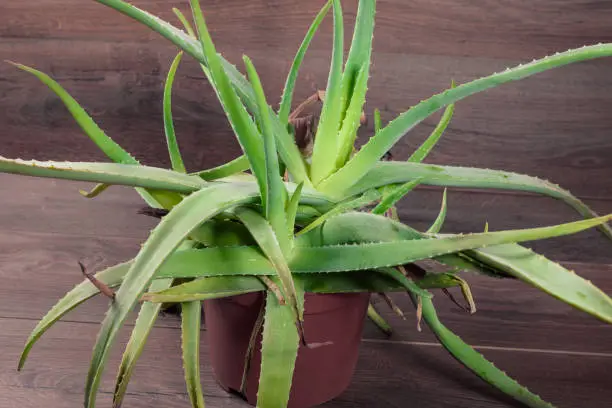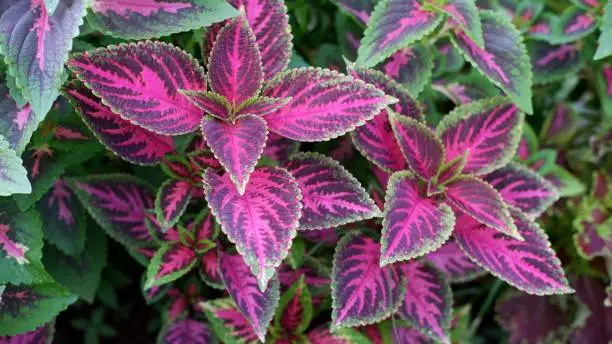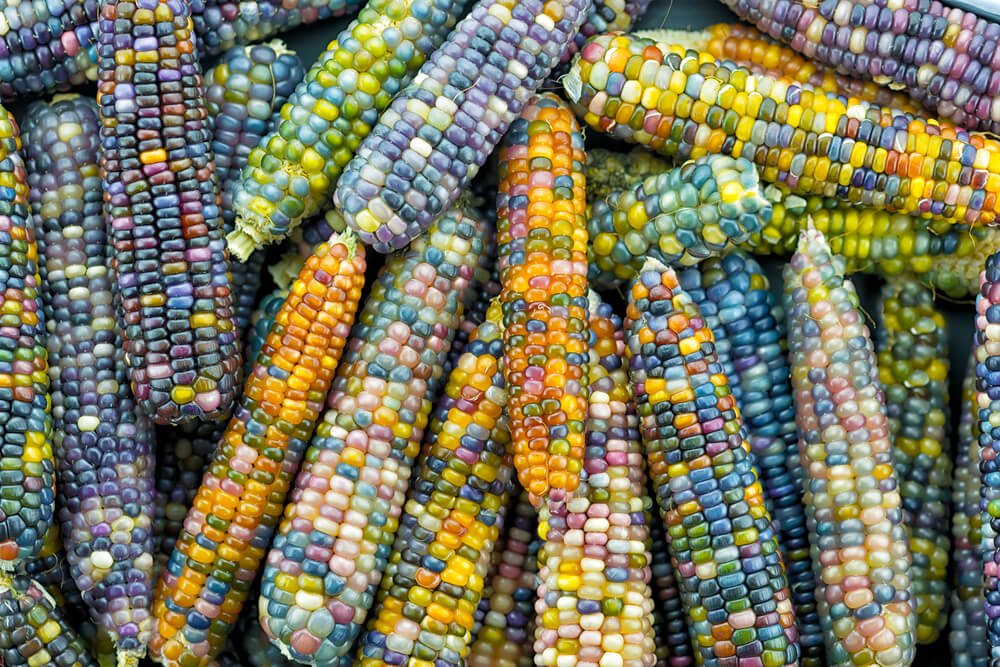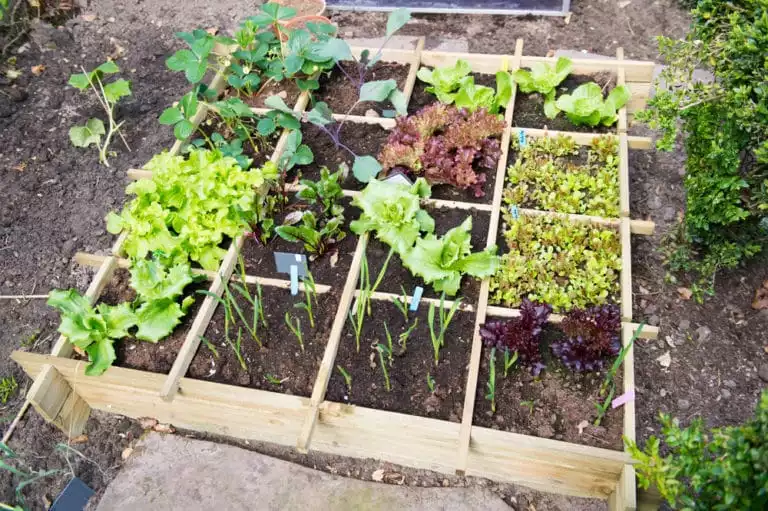Mulching is a common practice for gardeners and farmers to suppress weed growth, conserve soil moisture, and regulate soil temperature. However, simply placing mulch on top of the soil may not be enough to prevent weeds from sprouting. To effectively stop weeds from growing, it is important to put the right materials under the mulch.
One effective method is to lay down a layer of cardboard or newspaper before adding the mulch. These materials act as a barrier that blocks sunlight and prevents weed seeds from germinating. Be sure to wet the cardboard or newspaper thoroughly before adding the mulch to keep them in place and encourage decomposition.
Another option is to use landscape fabric or weed barrier cloth. These materials are made of woven or non-woven fabric that allows water and air to pass through but blocks sunlight. They are easy to install and can last for several years, making them a cost-effective solution for long-term weed control. However, be aware that some types of landscape fabric may not be biodegradable and can be difficult to remove if you decide to change your garden layout.
Understanding the Basics
Mulching is an effective way to prevent the growth of weeds in your garden. However, it is important to understand the basics of mulching to ensure that it is done correctly. Here are some key points to keep in mind:
- Can I use cardboard under mulch to stop weeds?
- Yes, cardboard can be used as a weed barrier under mulch. It is an affordable and effective option that can be found easily. However, it is important to make sure that the cardboard is free of any tape, staples or glue. These materials can prevent water and air from reaching the soil, which can harm the plants.
- What is the best material to use under mulch to prevent weed growth?
- Landscape fabric is a popular choice for preventing weed growth under mulch. It is made of a woven or non-woven material that allows water and air to pass through, but blocks sunlight. This prevents weed seeds from germinating and growing. However, it is important to use a high-quality landscape fabric that is thick enough to prevent weed growth and durable enough to withstand the elements.
- How effective is landscape fabric under mulch for weed control?
- Landscape fabric is a highly effective option for preventing weed growth under mulch. It can reduce the amount of time and effort required for weed control, and can also help conserve water and nutrients in the soil. However, it is important to note that landscape fabric can break down over time, which can allow weeds to grow through.
- What are some natural options for preventing weeds under mulch?
- There are several natural options for preventing weed growth under mulch. One option is to use a layer of newspaper or cardboard. Another option is to use organic mulch, such as wood chips or straw. These materials can help suppress weed growth and also provide additional benefits, such as improving soil health and conserving water.
- Is it necessary to use a weed barrier under mulch?
- While it is not always necessary to use a weed barrier under mulch, it can be a helpful option for preventing weed growth. Weed barriers can reduce the amount of time and effort required for weed control, and can also help conserve water and nutrients in the soil. However, it is important to choose a high-quality weed barrier that is durable and effective.
- Can I use newspaper under mulch to prevent weed growth?
- Mulch is a layer of material that is spread over the soil to protect it from the elements. It can be made from a variety of materials, including wood chips, leaves, straw, and grass clippings.
- Mulch helps to retain moisture in the soil, which is important for the growth of plants. It also helps to regulate soil temperature and prevent soil erosion.
- While mulch can help to prevent the growth of weeds, it is not a foolproof solution. Weeds can still grow through the mulch if it is not thick enough or if there are gaps in the coverage.
- To maximize the effectiveness of mulch in controlling weeds, it is important to use a thick layer (at least 2-3 inches) and to ensure that it is spread evenly over the soil.
- It is also important to choose the right type of mulch for your garden. Some materials, such as straw and grass clippings, can actually promote the growth of weeds if they contain weed seeds.
- If you are using organic mulch, it will eventually break down and become part of the soil. This can be beneficial for the health of your plants, but it also means that you will need to replenish the mulch periodically.
- Finally, it is important to keep in mind that mulch is not a substitute for proper soil preparation and plant care. To ensure the health of your garden, you will need to provide adequate water, nutrients, and sunlight, and to monitor for pests and diseases.
Types of Mulch
Mulch is an essential part of gardening, and it serves many purposes, including weed control, moisture retention, and temperature regulation. There are two main types of mulch: organic and inorganic.
Organic Mulch
Organic mulch is made from natural products and is an excellent choice for gardeners who want to improve soil quality and suppress weed growth. Some common types of organic mulch include:
- Bark: Bark mulch is made from the bark of trees such as pine, cedar, and hemlock. It is an excellent choice for suppressing weed growth and retaining moisture in the soil.
- Wood chips: Wood chips are made from shredded wood and are an excellent choice for suppressing weed growth and adding nutrients to the soil. They are available in different sizes and can be made from different types of wood.
- Compost: Compost is a natural product that is made from decomposed organic matter. It is an excellent choice for improving soil quality and suppressing weed growth.
- Straw: Straw is an excellent choice for suppressing weed growth and retaining moisture in the soil.
Inorganic Mulch
Inorganic mulch is made from materials that do not decompose, such as stone or plastic. It is an excellent choice for gardeners who want a low-maintenance option for weed control. Some common types of inorganic mulch include:
- Stone: Stone mulch is made from different types of stone, such as gravel or pebbles. It is an excellent choice for suppressing weed growth and adding a decorative touch to the garden.
- Plastic: Plastic mulch is made from a thin layer of plastic and is an excellent choice for suppressing weed growth and retaining moisture in the soil. However, it is not an eco-friendly option.
When choosing the type of mulch to use in your garden, consider factors such as cost, availability, and effectiveness. Additionally, it is crucial to apply mulch correctly to ensure that it provides the desired benefits.
Preparation Before Mulching
Before applying mulch to your garden, it is important to prepare the area properly to ensure the best results. This includes removing any existing weeds and preparing the soil. Here are some steps to follow for effective preparation before mulching.
Weed Removal
To prevent weeds from growing under your mulch, it is important to remove any existing weeds before applying it. There are several methods you can use to remove weeds, including hand-pulling, hoeing, digging, and using a trowel. You can also use a rake to remove any debris or dead plant material from the area.
If you have a large area to cover, you may want to consider using a tiller to break up the soil and remove any weeds or roots. This will help to create a clean, even surface for your mulch to be applied.
Soil Preparation
Once you have removed any weeds, it is important to prepare the soil before applying mulch. This can be done by adding compost or other organic matter to the soil to improve its quality and fertility. You can also add fertilizers or other soil amendments to help your plants grow strong and healthy.
Before adding any amendments, it is important to test the soil to determine its pH level and nutrient content. This will help you to choose the right amendments to add to your soil for optimal plant growth.
In summary, preparing your garden before applying mulch is an important step to ensure the best results. By removing weeds and preparing the soil, you can create a healthy, fertile environment for your plants to grow.
Using Barriers Under Mulch
Mulching is an effective way to control weeds in your garden, but sometimes you need to take additional steps to prevent weed growth. Using barriers under mulch is a great way to stop weeds from growing, and it can also help retain moisture in the soil. Here are some of the most popular barrier options:
Landscape Fabric
Landscape fabric is a popular choice for weed barriers. It is made from woven or non-woven materials and is designed to let water and air through while blocking sunlight. This makes it an effective weed barrier while still allowing your plants to get the nutrients they need. Landscape fabric is easy to install and comes in a variety of sizes to fit any garden.
Plastic Barriers
Plastic barriers are another option for preventing weeds. They are made from durable materials that can withstand harsh weather conditions. Plastic barriers are easy to install and can be cut to fit any size garden. However, they are not biodegradable and can be harmful to the environment if not disposed of properly.
Cardboard
Cardboard is a biodegradable option for a weed barrier. It is an excellent choice for gardens that need a temporary solution. Cardboard can be laid down under mulch to prevent weeds from growing. It is important to note that cardboard should be removed after a few months to prevent it from breaking down and affecting the soil quality.
Newspaper
Old newspapers are another biodegradable option for a weed barrier. They can be laid down under mulch to prevent weeds from growing. Like cardboard, newspapers should be removed after a few months to prevent them from breaking down and affecting the soil quality.
When choosing a barrier to use under your mulch, it is important to consider the type of garden you have and the materials you are using. Make sure to choose a barrier that is appropriate for your garden and that will not harm the environment.
Applying Mulch Correctly
Mulch is an effective way to prevent weed growth in your garden, but it is important to apply it correctly to get the best results. Here are some tips on spreading techniques and determining depth when applying mulch.
Spreading Techniques
When spreading mulch, it is important to ensure that it is spread evenly and not too thickly. If the mulch is too thick, it can prevent water and nutrients from reaching the soil, which can stunt plant growth. To spread mulch correctly, follow these steps:
- Clear the area of any debris and weeds.
- Spread a layer of newspaper or cardboard over the soil to further prevent weed growth.
- Spread the mulch evenly over the area, using a rake or shovel to distribute it.
- Avoid piling the mulch too high around the base of plants, as this can cause rot and other problems.
Determining Depth
The depth of the mulch layer is also important. If the layer is too thin, it may not effectively prevent weed growth, while a layer that is too thick can cause problems with plant growth. As a general rule, the mulch layer should be between 2 and 4 inches deep. However, the depth may vary depending on the type of mulch you are using.
When determining the depth of the mulch layer, consider the following factors:
- Type of mulch: Some types of mulch, such as straw or shredded leaves, may compress over time, so you may need to apply a thicker layer to start with.
- Plant growth: If you are mulching around young plants, a thinner layer may be more appropriate to allow for growth.
- Climate: In hot, dry climates, a thicker layer of mulch can help retain moisture in the soil.
By following these tips for spreading techniques and determining depth, you can effectively use mulch to prevent weed growth and promote healthy plant growth in your garden.
Maintaining Your Mulch
Proper maintenance of your mulch is essential to keep your garden healthy and weed-free. Here are some tips to help you maintain your mulch effectively.
Watering and Fertilizing
Watering and fertilizing are crucial for the health of your plants and the soil underneath the mulch. Regular watering will help your plants grow healthy and strong. Fertilizing your plants will provide them with the necessary nutrients they need to thrive.
When watering your plants, make sure to water deeply to encourage deep root growth. This will help your plants become more drought-resistant over time. Fertilize your plants with a nitrogen-rich fertilizer to promote healthy growth.
Weed Control
Weeds can quickly take over your garden if left unchecked. To prevent weeds from growing under your mulch, make sure to weed your garden regularly. Pull weeds by hand or use a hoe to remove them.
To prevent weeds from growing in the first place, consider using a pre-emergent weed killer. This type of weed killer will prevent weed seeds from germinating, keeping your garden weed-free.
Replacing Mulch
Over time, your mulch will break down and decompose. When this happens, it’s time to replace your mulch. Remove the old mulch and add a fresh layer of mulch to your garden.
Replacing your mulch regularly will help prevent weeds from growing and keep your garden healthy. It will also provide your plants with the necessary nutrients they need to thrive.
In conclusion, maintaining your mulch is essential to keep your garden healthy and weed-free. Make sure to water and fertilize your plants regularly, weed your garden, and replace your mulch when necessary. By following these tips, you can keep your garden healthy and beautiful all year round.
Additional Weed Control Methods
When it comes to weed control, mulch is a great option, but it may not always be enough to keep weeds at bay. Here are some additional weed control methods to consider:
Herbicides
Herbicides are chemical compounds that are designed to kill weeds. They can be effective, but they should be used with caution as they can also harm other plants and wildlife. Glyphosate, the active ingredient in Roundup, is a popular herbicide, but there are concerns about its safety and environmental impact. If you decide to use herbicides, make sure to follow the instructions carefully and use them sparingly.
Natural Weed Killers
If you prefer to avoid chemical herbicides, there are natural alternatives that can help control weeds. One option is vinegar, which can be used as a weed killer by spraying it directly on the leaves of the weeds. However, vinegar can also harm other plants, so it should be used with care. Another option is to use boiling water to kill weeds, but this method can also harm nearby plants.
In addition to these methods, there are other ways to control weeds without using chemicals. For example, you can manually pull weeds or use a hoe to remove them. You can also plant ground cover or use a living mulch to help suppress weed growth.
Overall, there are many options for weed control, and the best approach will depend on your specific situation and preferences. By combining mulch with other weed control methods, you can create a more effective and sustainable solution for keeping weeds at bay.
Benefits of Mulching
Mulching is a soil and water conservation practice that involves covering the soil with a layer of organic or inorganic material. This layer of material can provide numerous benefits to the soil, plants, and overall landscape. In this section, we will discuss the benefits of mulching, including soil health, plant health, and aesthetic appeal.
Soil Health
Mulching can improve soil health in several ways. Firstly, it can help retain moisture in the soil by reducing evaporation. This is especially important during hot and dry periods when water is scarce. Secondly, mulch can act as a soil amendment by adding organic matter to the soil. As the mulch decomposes, it releases nutrients and beneficial microbes that can improve soil structure and fertility. Thirdly, mulching can help suppress weeds that compete with plants for nutrients and water.
Plant Health
Mulching can also benefit plant health in many ways. Firstly, it can protect the roots of trees and shrubs from extreme temperatures by insulating the soil. Secondly, mulch can provide a soft and rich environment for fruit and other plants to grow. Thirdly, mulch can help prevent soil compaction, which can improve oxygen flow to the roots and promote healthy growth. Fourthly, mulching can help prevent disease by reducing soil splash and contact with infected plant material.
Aesthetic Appeal
Mulching can also improve the aesthetic appeal of a landscape. Firstly, it can provide a finished look to the garden beds by covering bare soil. Secondly, mulch can be used to highlight certain plants or features in the landscape. Thirdly, mulch can be used to create contrast and texture in the landscape design.
In conclusion, mulching provides numerous benefits to the soil, plants, and overall landscape. Farmers and gardeners alike can benefit from this practice by improving soil health, plant health, and aesthetic appeal.
Potential Drawbacks of Mulching
Mulching is a popular method used to prevent weed growth and promote plant growth. However, there are some potential drawbacks to mulching that should be considered before using this method.
Pests
One potential drawback of mulching is that it can attract pests. Insects, such as termites, are attracted to the moist environment created by mulch. This can lead to infestations and damage to nearby structures, such as wooden decks or fences. In addition, rodents and other small animals may be attracted to the mulch as a source of food and shelter.
Over-Mulching
Another potential drawback of mulching is over-mulching. This occurs when too much mulch is applied to an area, which can lead to a number of problems. Over-mulching can prevent air and water from reaching the soil, which can lead to plant stress and root rot. In addition, over-mulching can create a barrier that prevents new plants from growing and can even kill existing plants.
To avoid over-mulching, it is important to apply mulch in thin layers and to avoid piling it up against the base of trees or plants. It is also important to periodically remove old mulch and replace it with fresh mulch to prevent the buildup of harmful fungi and bacteria.
Invasive species are also a potential concern when using mulch. Some types of mulch, such as straw mulch, can introduce non-native plants and weeds into the yard or garden. It is important to use mulch from a reputable source and to avoid using mulch made from invasive plant species.
Additionally, using mulch made from recycled materials, such as concrete or tires, can have negative environmental impacts. These materials can release harmful chemicals and toxins into the soil, which can harm plants and wildlife.
In summary, while mulching is an effective way to control weeds and promote plant growth, there are some potential drawbacks that should be considered. By taking steps to avoid over-mulching and using mulch from a reputable source, it is possible to reap the benefits of mulching while minimizing the risks.
Frequently Asked Questions
Can I use cardboard under mulch to stop weeds?
Yes, cardboard can be used as a weed barrier under mulch. It is an affordable and effective option that can be found easily. However, it is important to make sure that the cardboard is free of any tape, staples or glue. These materials can prevent water and air from reaching the soil, which can harm the plants.
What is the best material to use under mulch to prevent weed growth?
Landscape fabric is a popular choice for preventing weed growth under mulch. It is made of a woven or non-woven material that allows water and air to pass through, but blocks sunlight. This prevents weed seeds from germinating and growing. However, it is important to use a high-quality landscape fabric that is thick enough to prevent weed growth and durable enough to withstand the elements.
How effective is landscape fabric under mulch for weed control?
Landscape fabric is a highly effective option for preventing weed growth under mulch. It can reduce the amount of time and effort required for weed control, and can also help conserve water and nutrients in the soil. However, it is important to note that landscape fabric can break down over time, which can allow weeds to grow through.
What are some natural options for preventing weeds under mulch?
There are several natural options for preventing weed growth under mulch. One option is to use a layer of newspaper or cardboard. Another option is to use organic mulch, such as wood chips or straw. These materials can help suppress weed growth and also provide additional benefits, such as improving soil health and conserving water.
Is it necessary to use a weed barrier under mulch?
While it is not always necessary to use a weed barrier under mulch, it can be a helpful option for preventing weed growth. Weed barriers can reduce the amount of time and effort required for weed control, and can also help conserve water and nutrients in the soil. However, it is important to choose a high-quality weed barrier that is durable and effective.
Can I use newspaper under mulch to prevent weed growth?
Yes, a newspaper can be used as a weed barrier under mulch. It is an affordable and effective option that can be found easily. However, it is important to make sure that the newspaper is free of any glossy or colored ink, as these materials can be harmful to the soil and plants. It is also important to use several layers of newspaper to ensure effective weed control.



